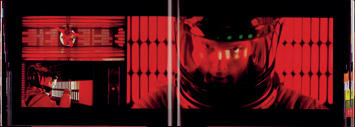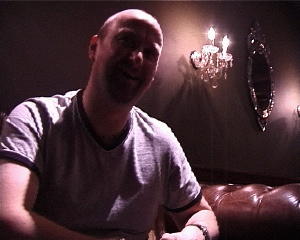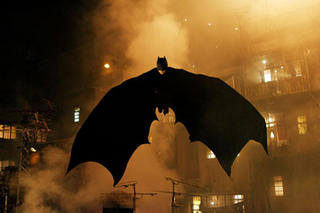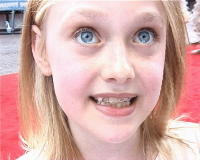Stanley Kubrick Retrospective



The word auteur (or author if French is a little too high brow for you) is thrown around quite liberally these days. Most filmmakers who write and/or direct films with a distinct and singular vision are inevitably described as auteurs. Unfortunately for the elitist film geeks, the auteur theory is really just that – a theory. A term coined by French new wave filmmaker Francois Truffaut in his 1954 essay Une certaine tendance du cinéma français, the auteur theory is simply a way of perceiving a film as the product of a single mind, stamped indelibly with the motifs and concepts of an individual: the Director.
This may be the belief of the odd egocentric blowhard as they lambast their film crew through a bullhorn but the reality is, like or not, that one person does not make a film. Period. Of course one person can initiate a film, bring together the elements and focus the talents of the collective on the realisation of a film but, to put it bluntly: if an auteur stood on an empty film set, it’d be highly unlikely that a film would spontaneously erupt from thin air.
Of course, like all opinions of film journalists who like the sound of their own waffling: there is always an exception to the rule; and that exception was Stanley Kubrick. To describe Kubrick as an auteur is an insult to his brilliance; point of fact Kubrick hated the term. No, Kubrick was a control freak, an obsessive creative on the never ending quest for perfection and on the journey to the unattainable; he made some of the greatest films in the history of cinema.
As it happens, July 26th was Stanley’s birthday. He was born the son of Eastern European Jew’s; in the Bronx, New York City, 1928.
His father, a well-respected Doctor, introduced Stanley to two of the three great passions in his life: Chess and Photography. Stanley’s love of Chess directly affected the way he approached his career and the strategic way in which he would conduct his professional relationships. Stanley’s third passion was Jazz. His youthful ambition to be a professional drummer would soon be overtaken by his obsession with photography. He proved his remarkable talent for photography at a young age; he was made the official school photographer and after selling some of his early shots to Look magazine, he eventually was taken on as a staff member, remaining there for four years. One photo essay in particular: Prize-fighter, led to Kubrick’s initial foray into filmmaking: a 35mm documentary about a boxer, entitled Day of the Fight this was followed by two more documentaries: The Flying Padre & The Seafarers.
After exploring the documentary form, which was a natural progression from his photojournalism, Kubrick shifted his gaze to feature films. In 1953 he directed
Fear and Desire, a war film (of a kind) about four soldiers in a fictitious war, trapped behind enemy lines. The film was hampered by production difficulties and the fact that Kubrick shot it silent and post-sync all the audio and sound effects, which added significantly to the production costs. When it was completed, it was poorly received. Fear and Desire is really only noteworthy when viewed retrospectively, as a master filmmaker finding his feet and testing his abilities. Kubrick himself labelled the film ‘amateurish’, which is a pretty apt description. For his next film, Kubrick directed Killer’s Kiss, a noir-ish thriller about a prize fighter who becomes involved with the wrong girl. The film was a marked improvement on Kubrick’s previous effort and showed that he was a fast learner. Its crisp black and white cinematography and atmospheric set pieces showed Kubrick’s developing style and the film was met with positive reviews but failed to make a dent in the box office. It did however bring Kubrick to the attention of James B Harris; a young producer. The pair formed Harris- Kubrick Productions and together they went on to make Kubrick’s next feature, also in the crime thriller genre: The Killing. The story of ex-con Johnny Clay and his intricately planned racetrack heist; The Killing shows Kubrick operating on all cylinders as a fully developed filmmaker in his own right. His experimentation with structure in The Killing was a large influence on Quentin Tarantino’s Reservoir Dogs and Pulp Fiction. Kubrick penned the taut script and then wisely asked ‘Dime Store Dostoevsky’ Jim Thompson (who wrote The Getaway) to script the hardboiled dialogue.
After The Killing, Kubrick and Harris made Paths of Glory, which starred Kirk Douglas and was shot on location in Munich, Germany. The film told the story of the bitter trench warfare between the French and the German armies during WWI. Douglas played French soldier Colonel Dax; who’s superior General Broulard (Adolphe Menjou) orders Dax and his men to assault a heavily fortified enemy position against impossible odds. The primary reason for this lunacy is the prestige (and possible promotion) that it will earn the General in his military career. Despite their orders to attack the position, the soldiers retreat under heavy bombardment. The spiteful Broulard orders a court- martial and demands that three of the men in the company are made examples of and charged with cowardice, a crime punishable by death. Colonel Dax then defends the men at their court-martial.
With Paths of Glory, Kubrick finally established himself as a force to be reckoned with, not only in Hollywood but in filmmaking as an art form. Paths of Glory is note-perfect, there simply isn’t a misstep or ill-conceived scene in the film and it ranks as one of the greatest war films (or anti-war films) ever made. So often accused of being cold and unfeeling as a filmmaker; the deeply moving final scene of Paths of Glory reveals a compassion and empathy that marks the beginning of a recurring theme in a lot of Kubrick’s work – the loss (or absence) of humanity and it’s toll.
After Paths of Glory, Kubrick was tapped to direct One Eyed Jack’s, a western starring Marlon Brando but when Brando decided to direct the film himself, Kubrick left the project after having spent six months in development. Shortly afterwards, Kirk Douglas invited Kubrick to helm Spartacus, the original director Anthony Mann having been fired by Douglas (who was executive producer) after ‘creative differences’. Kubrick agreed and hit the ground running. He was 31 and was directing some of the biggest screen stars of the time: Laurence Olivier, Peter Ustinov, Tony Curtis & Charles Laughton.
Kubrick was famously undaunted at the prospect of directing such a famous cast and set to work trying to make the film his own, under considerable creative constraints. Unable to alter the script (penned by blacklisted Hollywood screenwriter Dalton Trumbo) Kubrick felt it was full of ‘stupid moralising’ regardless he pressed on, spending six weeks alone shooting a major battle sequence. Adding more pressure, crew members resented Kubrick’s rather ‘hands-on’ method of Direction. Cinematographer Russell Metty walked off the set, complaining that Kubrick wasn’t giving him the freedom to do his job. On returning to the set, Kubrick told him to ‘shut up and butt out’ and as a result, Kubrick assumed a majority of the Cinematography work on Spartacus.
Metty complained about this right up until the film’s release and even tried to have his name removed from the credits. Ironically, Metty went on to receive the Academy Award for Cinematography.
After Spartacus, Kubrick collaborated once more with his producing partner James Harris on an adaptation of Vladimir Nabokov’s controversial novel Lolita, the story of Paedophiliac college professor Humbert Humbert and his obsessive love for a sexually active 12 year old girl. A taboo subject even today (as Adrian Lyne found out when he filmed his version in 1997), in 1962 filming Lolita was tantamount to insanity. Kubrick offered the role of Humbert to a host of A-list actors (including Cary Grant who deemed the offer personally insulting) eventually casting James Mason as the hapless Humbert and new-comer Sue Lyon as the eponymous object of his infatuation. Kubrick cast British actor Peter Sellers in the role of the enigmatic Clare Quilty (a minor character in the book that Nabokov expanded for his screenplay) and spent more time with Sellers preparing the character of Quilty than with any other cast members, causing Mason to opine that he had accepted the wrong part. In some scenes Kubrick would cover Sellers with two or three cameras, in order to capture any improvisation that Sellers might engage in. Invariably, Sellers was gold on take one, patchy on take two and practically spent by take three. It would be the first of two collaborations between Sellers and Kubrick.
Given the uproar that had already developed with the Production Code and the Catholic Legion of Decency; Lolita’s age was changed from 12 (as it is in the book) to a slightly more acceptable 14. Kubrick shot the film in England, mainly to distance himself from the controversy in the United States; eventually Kubrick would make his home there. It would be the first major production over which Kubrick would have creative control. Dancing around the censors forced Kubrick to layer the film with incredible subtlety and employ the use of metaphor and bizarre loaded visual puns (such as Humbert slapping a stuffed beaver with a tennis racket at the aptly named ‘Camp Climax’) as opposed to being literal or obvious. Thanks to the controversy, the film met with box office success but the critics’ opinions were mixed, some complaining that the film lacked the book’s depth and psychological detail; which seems an obvious deduction given the furore created by the Legion of Decency combined with the social taboos of the day. The films greatest critic was probably Kubrick himself who famously remarked that had he known how much he would be forced to cut and alter, he’d have never attempted the film at all. He remarked on the pressures of the films production with some regret: "I would fault myself in one area of the film, because of all the pressure over the Production Code and the Catholic Legion of Decency at the time, I wasn't able to give any weight at all to the erotic aspect of Humbert's relationship with Lolita; and because his sexual obsession was only hinted at, it was assumed too quickly that Humbert was in love, whereas in the novel this comes as a discovery at the end."
After Lolita, Kubrick parted ways with Producer James Harris, assuming producing duties on all his subsequent films. His next project was an adaptation of ‘Red Alert’, a thriller by Peter George about a nuclear ‘accident’. As Kubrick feverishly researched the film he came to the decision to make the film as a black comedy.
Thus Dr Strangelove or How I Learned to Stop Worrying and Love the Bomb was born. Again, Kubrick would collaborate with Peter Sellers, who would perform multiple roles in the film, the humour of which was pitch black, endearing it to the younger audiences during the turbulent sixties. It has since become one of Kubrick’s most loved and enduring works. Released in 1964, hot on the heels of the Cuban Missile crisis, the film was derided by many critics for its ‘sick’ humour.
The equivalent reaction today would be to make a comedy about the collapse of the World Trade Centre. When considered in the proper context, the sheer balls of Dr Strangelove is one of its most appealing aspects. Its anarchic assault on the inherent stupidity of nuclear warfare was a breath of fresh air and Sellers utterly surreal performance as the eponymous Doctor is the stuff of legend and has been commented on and poured over by far better writers than myself. You can check out Brian Siano’s great commentary on Dr Strangelove at: http://www.visualmemory.co.uk/amk/doc/0017.html
It’s been a much commented upon fact that Kubrick’s mind was like a sponge and his intellect, vast and probing. He had an extraordinary capacity for assimilating knowledge and that aptitude could be focused like a laser towards almost any topic. He was known to hold conversations with his collaborators (most often via telephone, his preferred method of communication) that would last several hours – or more. British film critic the late Alexander Walker, who knew Kubrick and wrote of his work better than anyone, famously described a dinner conversation between he and Kubrick: "An evening's conversation with him has covered such areas as optical perception in relation to man's survival; the phenomenon of phosphene; German coastal gun emplacements in Normandy; compromised safety margins in commercial flying; Dr Goebbels' role as a pioneer film publicist; the Right's inability to produce dialecticians to match the Left's; the Legion of Decency's pressures during the making of Lolita; S.A.M.-3 missiles in the Arab-Israeli conflict; Irish politics and the possibility of similarities in the voice prints of demagogues; and of course, chess."
Over his career as a filmmaker, Kubrick had absorbed huge amounts of research and information and when choosing a subject for a film, he would often be engaged by a subject or concept and would seek out a novel which could provide a framework around which he could ‘wrap’ his ideas, moulding and shaping the piece till it assumed the form he’d intended for it. This usually meant a large number of disgruntled novelists were left in his wake as he deconstructed the novels he adapted.
Following Strangelove, Kubrick was drawn to a science fiction short story called The Sentinel by British author Arthur C Clarke. He engaged Clarke’s services to adapt his own work and set about developing the story into what would become 2001: A Space Odyssey. Perhaps Kubrick’s greatest cinematic achievement, its lasting power thanks largely in part to the extraordinary impact of its images (the film only contains 40 minutes of dialogue); aided in no small amount by the superior special effects which even today hold their own against the best CGI which, considering the film is 30 years old, is a staggering achievement.
Of working under Kubrick’s intense scriptwriting brain-drain, Clarke remarked: “Every time I get through a session with Stanley, I have to go lie down."
This often unbearable intellectual intensity is repeated throughout the rest of Kubrick’s career; screenwriters and collaborators of Kubrick’s describe a common feeling of being used-up and spent after having worked with the director. Some react with volatility and become disgruntled (Frederic Raphael, who worked with Kubrick on Eyes Wide Shut, wrote a scathing ‘tell-all’ book about his experiences called Eyes Wide Open) but others are more philosophical and are even appreciative of the chance to work with such a unique talent as Kubrick. Michael Herr, who worked with Kubrick on the screenplay for Full Metal Jacket - along with Gustav Hasford, the author of that films source material; the short story The Short-Timers - also found Kubrick’s intense working style rigorous but was affected by Kubrick’s humanity, sharp wit and sense of humour. In his book Kubrick published after Kubrick’s death in 1999, Herr reveals Kubrick as a fan of The Simpson’s & Seinfeld ; one wonders what the filmmaker thought of the numerous references to his films that are littered throughout The Simpson’s numerous episodes.
In the years following 2001: A Space Odyssey, Kubrick’s subsequent films have grown in status and have retrospectively achieved a kind of iconic status, this is due largely in part to the director’s decidedly un-prolific output. This meant the ever growing fan base of Stanley Kubrick’s films would wait with baited breath for each successive film, content in the knowledge that they would experience a filmic event that was (and remains) wholly uncommon within the cinema realm. Every film was something to savour, to watch again and again. It was a unique connection between an audience and a filmmaker like Kubrick, we were grateful he existed. As Friedrich Nietzsche said “The essence of all beautiful art, all great art, is gratitude”
Over 30 years Kubrick produced & directed only five films. They are among his most famous: A Clockwork Orange, Barry Lyndon, The Shining, Full Metal Jacket and Eyes Wide Shut. The images of which have branded themselves into the collective unconscious: the bowler-hat clad Alex in A Clockwork Orange, flanked by his ‘droogs’, getting ready for ‘a bit of the old ultra-violence’, the axe-wielding Jack Torrance pursuing his terrified son through an ice maze in The Shining, the dream-as-reality Venetian masked orgy in Eyes Wide Shut, the tightly wound, abusive Gunnery Sgt. Hartman lambasting his recruits in Full Metal Jacket – Kubrick’s cinematic eye was entirely unmatchable. His obsession was all pervasive, as if he was more of a conduit for a film, than an author of it.
Every man has his own purpose: the only imperative is to follow it, to embrace it, no matter where it leads – Henry Miller










